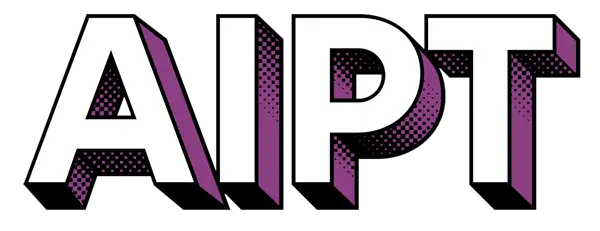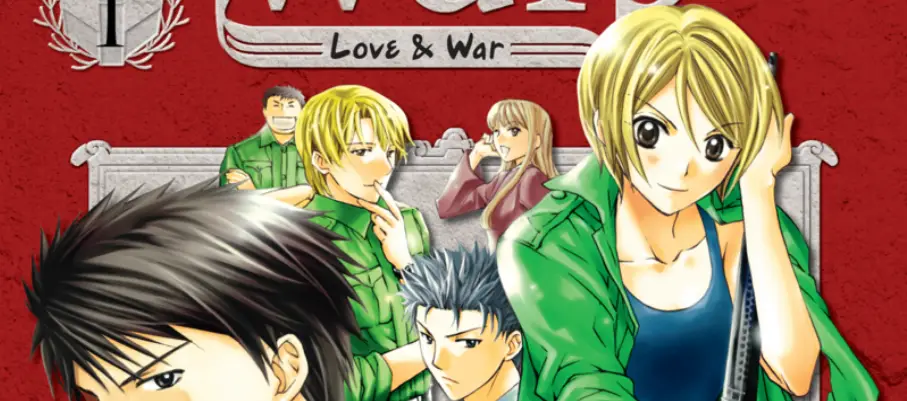Shojo manga are series that are aimed at young girls from around 8 to 18. Series that would fall into this specific type of manga are Fruits Basket, Cardcaptor Sakura, Skip Beat, and Sailor Moon. From personal experience, most shojo manga usually have a strong focus on romance. I bring this up, because Library Wars: Love & War is a shojo series and it’s honestly one of my favorite mangas of the genre (though for unique reasons).
Library Wars: Love & War originally started off a light novel series by writer Hiro Arikawa that spawned a few different adaptions, including this manga. It has romance in it, but it also has a bit of action, comedy, and an interesting focus and discussion on censorship and freedom of knowledge. However, we’ll explain that in the review. Let’s take a look at the first volume of the series. Is it good?
Library Wars: Love & War Vol. 1 (Viz Media)

Original Concept by: Hiro Arikawa
English Adaption and Translation by: Kinami Watabe
30 years ago in Japan, something called the Media Betterment Act was passed and the Media Betterment Committee was created as a result. This committee and act essentially caused mass censorship over all forms of media that the main government found unacceptable or potentially harmful. The only institution that could oppose this censorship were libraries, where they contained free, unrestricted and uncensored books, newspapers, magazines, and other reference materials to the Library Freedom Act. Regardless of this law, the MBC constantly fights back and tries to raid the libraries, leading local small governments to create the Library Forces, a special armed unit and protection group that defends the libraries and people’s rights to read these books.
Iku Kasahara is the newest recruit to join the Kanto division of the Library Forces; she wants to train and become part of the Defense Force, the group that actually fights the MBC head on and defends the libraries from attack. She was inspired by this brave hero from the Library Forces, who stood up for her when some MBC agents tried to take a book away from her, wanting to become just like him. However, she doesn’t remember what the guy looked like and the road to becoming a member of the Defense Force isn’t easy. Especially when she has a very tough instructor by the name of Atsushi Dojo constantly breathing down her neck and giving her a hard time.

The manga also wastes no time here in developing its story and characters on top of the basic setup and world-building. The whole situation with Kasahara doing basic training and trying to get into the Defense Force is wrapped up by the halfway point of the volume, and then we’re already on to the first major part of the story, her time as a member of: the Library Task Force, a higher position in the organization than Defense Force and a position reserved only for the best of the best.
Iku Kasahara is a great heroine and a really likeable lead for this series. While a bit naive and childish in areas, she has a big heart and strong passion for what she believes in. She tries to help others when she can, recognizes her failures and tries to learn and grow from them, and stands up for what she believes is right (for instance, facing down a group of MBC agents by herself even though she has no authority with them). She often fails and makes things tougher on herself a lot of the time, especially evident in her interactions with Dojo, but that only makes her a more flawed and believable protagonist. Over the course of this first volume, you really see how she is a real, developed, enjoyable, and also pretty funny character and really come to root for her in her journey.

There are three other big characters. We have Asako Shibazaki, a librarian, who is Karashara’s roommate and friend. She is a bit flirty at times with Dojo and likes messing a bit with Iku, but she is an enjoyable character nonetheless with how smart and confident she comes across. Then there are Mikihisa Komaki and Ryusuke Genda, higher ranked members of the Library Forces, who don’t really do much this volume. Both of them are nice characters and do provide some amusing moments, whether through their actions or response to something, but they don’t really get to shine in this outing yet. Still though, it’s an entire cast of characters you can at least like or want to follow, which is good at this stage of the game.
The writing on the book is good, but not without its problems. Like I said, the story is fast moving so the pacing is pretty fast. There are some moments where the manga slows down a bit to let a moment happen between characters, but usually things go by pretty quickly. However, it’s not as a bad as say, Seraph of the End and things do get to develop pretty smoothly and progress naturally, so you can still get pretty invested in what is happening. The characterization is pretty solid so far, giving every character a moment or two to shine and have something that really establishes them as an individual. The dialogue is good, with plenty of charm, emotion, and humor. Speaking of which, there is some decent humor here from time to time, especially with the interactions between Karashara and Dojo. One minor quibble: the plot and execution can feel a bit telegraphed and obvious at points, in the sense you can probably call a few plot points early on or as they are introduced.

The last thing to note is the artwork for the book, which I’m a bit mixed on in areas. The characters are drawn rather nicely and are very expressive, able to sell some of the emotion and humor in the book. However, Dojo and Tezuka are both drawn very similarly with their body types and faces, with the only distinct difference being their hair (it’s easy to confuse them at some points). The layouts are put together well, allowing for tight storytelling and good movement and motion. However, the backgrounds and detail are extremely limited. It always feels like there is a white abyss in the background due to how empty it looks. On the plus side though, the manga is very capable at conveying strong moments with light and dark tones and motion lines. It really helps a lot of the more tense and emotional scenes in the book I find.
Is It Good?
Library Wars: Love & War Vol. 1 is a good start to this series. It has an interesting premise going for it, a great female lead, good writing, and decent artwork overall. There are areas for the series to improve in, which ultimately does happen as time goes on, but there’s enough here to like that you shouldn’t have any real issues while reading the manga. If are looking for a series with a good main character, interesting subject matter, and don’t mind a little romance; I definitely recommend this first volume to you.
Library Wars: Love & War is available from Viz Media. AS of this review, there are 12 volumes available with the 13th coming soon. The series just finished over in Japan with volume 14. The series as a whole is an adaption of Hiro Arikawa’s light novel series called Toshokan Senso. There were also a few other adaptions, such as anime TV series, an animated movie, and even live-action movie; that are only available in Japan.
Join the AIPT Patreon
Want to take our relationship to the next level? Become a patron today to gain access to exclusive perks, such as:
- ❌ Remove all ads on the website
- 💬 Join our Discord community, where we chat about the latest news and releases from everything we cover on AIPT
- 📗 Access to our monthly book club
- 📦 Get a physical trade paperback shipped to you every month
- 💥 And more!












